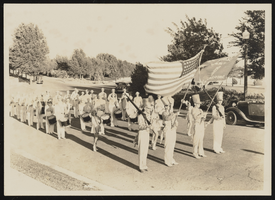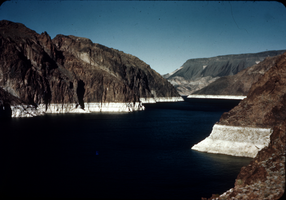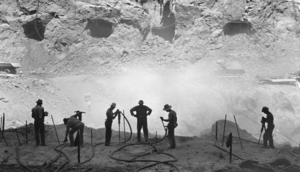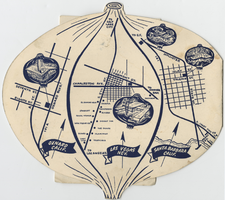Search the Special Collections and Archives Portal
Search Results

Photograph of a U.S. treating plant postcard, Las Vegas, circa early 1930s
Date
Archival Collection
Description
Image
Later Las Vegas, Nevada, 1930-1980
Level of Description
Scope and Contents
Materials contain photographs of Las Vegas, Nevada after 1930, including photographs of the Von Tobel family, Fremont Street, Hoover Dam construction, aerial photographs of the city, local organizations like the Kiwanis Club, and the Von Tobel Lumber Company.
Archival Collection
Collection Name: Jacob E. Von Tobel Photograph Collection
Box/Folder: N/A
Archival Component

Paul Sogan interview, May 16, 1995: transcript
Date
Archival Collection
Description
Interviewer: Dennis McBride
Text

Nanyu Tomiyasu interview, April 12, 1977: transcript
Date
Archival Collection
Description
On April 12, 1977, collector Mark French interviewed Nanyu Tomiyasu (born May 28th, 1918 in Las Vegas, Nevada) at the University of Nevada, Las Vegas. In this interview, Nanyu Tomiyasu discusses growing up and working on his father’s (Bill Yonema Tomiyasu) farm in Las Vegas, Nevada. He also discusses how his father came to Las Vegas and being one of the few Japanese families in Las Vegas as a child.
Text

Sons of the American Legion Drum & Bugle Corps: photographic print
Date
Archival Collection
Description
Image
Stratosphere Tower concrete pour: video, 1992 February 22
Level of Description
Scope and Contents
Las Vegas, Nevada newscasts describing the foundation at the Stratosphere Tower marking the largest continuous concrete pour since Hoover Dam. Original media VHS, color, aspect ratio 4 x 3, frame size 720 x 486.
Archival Collection
Collection Name: Bob Stupak Professional Papers
Box/Folder: Digital File 00, Box 36
Archival Component
Albert Risley oral history interview
Identifier
Abstract
Oral history interview with Albert Risley conducted by his granddaughter, Wendy Dalmas, on February 27, 1979 for the Ralph Roske Oral History Project on Early Las Vegas. In this interview, Risley discusses the development of Boulder City, Nevada after his transfer there from Denver, Colorado in 1944. Risley discusses creating a point-based system which was used to assign housing to government employees based on their status and needs. Risley describes life in Boulder City during World War II, and the nearby U.S. Army camp, Camp Williston, which was established to protect Boulder (Hoover) Dam during the war. Risley also describes observing nuclear weapons tests and his later career as a Contracting Officer and Procurement Officer for the Lower Colorado Region after being promoted in 1971.
Archival Collection

Slide of Lake Mead, circa late 1930s
Date
Archival Collection
Description
Image

Film transparency of workers drilling on the canyon floor, Hoover Damn, circa 1930-1935
Date
Archival Collection
Description
Image

